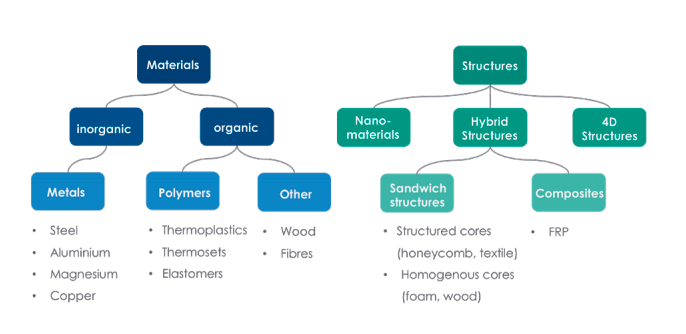
The need to save on vehicles’ fuel consumption is becoming increasingly important for car manufacturers, for many reasons. Among them, consumers being much more informed about environmental change and global warming, which in turn means increasingly sophisticated requirements centered on eco-sustainability.
One of the main design approaches currently used by manufacturers is decreasing the weight of vehicles, to improve fuel savings on their vehicle ranges.
A weight reduction can be achieved in several ways: re-sizing, parts and functions integration, materials substitutions and a combination of these methods. The overriding goal is to reduce the weight of the vehicle, which in turn improves fuel-savings and performance.
Lighter cars: lower consumption, lower emissions, better performance
Over recent years car manufacturers have sought not only a reduction in cars weight to improve fuel consumption, but also for better driving performance and to reduce CO2 emissions.
But how is this done?
By using low density materials, such as aluminum, magnesium and plastic.
According to various studies, a 10% reduction in vehicle weight corresponds to an increased range of about 5-6% km/litre. This, applied to all the vehicles produced in a year, means a huge fuel saving, and above all, a major reduction of noxious substances expelled into the atmosphere.
Cars that are lighter, yet bigger
Into this virtuous process however, a complicating factor has been introduced. Indeed, over recent years the general trend has been for consumers to prefer larger cars, in particular SUVs, which are heavier than saloons or city cars.
Therefore, whilst vehicle weights are reduced, the average size of cars in circulation has increased, which interferes with the ultimate goal.
New eco-sustainable materials
We have seen that one of the major goals of weight reduction is a corresponding reduction in CO2 emissions caused by combustion.
This worthy ecological goal is effectively jeopardised if the car-building process substitutes steel - the main building block for vehicle structures - with other materials with a high environmental impact.
Therefore, when selecting the materials to use, designers and engineers must take into consideration a large number of factors, some of which may be in direct conflict in terms of economic and environmental impact.
Thus, the design team has to manage opposing goals and define precise and accepted limits for each requirement of vehicle design.
It’s not enough to just change the materials
The process of decreasing vehicle weight could mistakenly be interpreted as simply substituting heavy materials such as steel with lighter ones such as aluminum.
Unfortunately, this is not sufficient, as the use of a lighter material implies a specialised design process.
Whilst evaluating new materials, design considerations must be taken into account too, which need to find new solutions suitable for accommodating exactly that material.
Organic and inorganic materials
What materials are used today in order to build a car?
To better understand, take a look at this useful graphic, included in a very interesting document published by Alliance.
 As you can see, the materials can be divided into two macro categories:
As you can see, the materials can be divided into two macro categories:
- inorganic
- organic
The following metals belong in the first group:
- steel
- aluminium
- magnesium
- copper
Whilst in the second group, there are two sub-groups:
- polymers: thermoplastics, thermosetting materials (polyurethane, epoxy resins, polyphenol, polydicyclopentadiene, polyamide), elastomer (India rubber, natural rubber)
- others: wood, fibre
Another important element is the structure of these materials:
- nanomaterials
- hybrids
- 4D
What are the alternatives to steel?
Still today the main material used in building cars is steel, which is being partly substituted by alternative materials.
What are these alternatives?
- Aluminium: it is still the most-adopted light material, even if carbon fibre is becoming increasingly popular
- Magnesium: this is 75% lighter than steel and 33% lighter than aluminium. However, magnesium components currently make up just 1% of the weight of a typical vehicle. It is mainly used in very costly sports cars.
- Carbon fibre composites: these are gradually gaining a foothold in an increasing number of vehicles, in particular in the seats and in side and roof panels.
- Plastics: despite them representing about 50% of volume in a modern car, their weight is only 10%. Increased usage therefore does not necessarily mean significantly reducing the weight of the vehicle.
- Natural fibres: mostly hemp, flax and kenaf have been used for decades in composites on car interiors for example on door panels, head support upholstery, boot upholstery, strut coverings and seatbacks.
The adoption of new materials to lighten the structural weight of cars is a work in progress, which requires big investments in R&D. Nevertheless, according to one study by McKinsey, the use of alternative materials to decrease car weights will reach aerospace sector levels in percentage by 2030.



